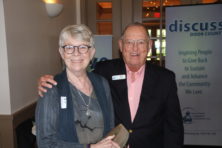Bret Bicoy: Go Fraud Me
- Share
- Tweet
- Pin
- Share
A newborn baby in Milwaukee needs a heart transplant so a family “friend” sets up a page on a crowdfunding website to collect donations to help care for the child. Unfortunately, the sick child’s parents had no control over the website and all those contributions made by the community never reach the family.
A wife and mother tragically dies in Texas due to complications during birth. The community is invited to donate through a crowdfunding website to help ease the financial burden on the husband and his now motherless children. While the tragedy is all too real, the website was created without the family’s knowledge by a criminal who stole all the gifts.
An Iowa mom pretends that her daughter has cancer so she can prey on people’s generosity and solicit contributions through a crowdfunding website. The mom even goes so far as to shave her daughter’s head and use the staged photographs to gain sympathy as she cons good people out of their money.
These are just a few of the many examples of the most heinous kind of fraud imaginable – using personal tragedies to steal money from generous people. It’s the dark side of crowdfunding.
GoFundMe. Indiegogo. Kickstarter. WePay. Fundable. By some estimates, there are nearly 500 crowdfunding platforms online today. Crowdfunding, for the uninitiated, normally involves a person setting up an online webpage at a crowdfunding website so the public – the “crowd” – can contribute to the development of a product or project. The crowdfunding platform processes the credit card transaction, collects a fee, then deposits the rest of the money in the checking account of the person who set up the webpage.
The majority of crowdfunding is initiated by an entrepreneur who wants to develop a product, but it is increasingly being used by individual people to ask their friends and family to help them in times of need or to make a dream come true. While crowdfunding can be a wonderful way to offer financial support to others in your community, it’s also an easy way for conmen to defraud you of your money under the guise of asking for your help.
Of course, these crowdfunding websites don’t intend to offer a platform for fraud. Indeed, the largest and most reputable online funding websites have teams of people dedicated to ferreting out criminal behavior. The challenge is that these “charity” scams pull on your heartstrings and count on you making a quick, impulse decision. The hustlers then withdraw the money and get away before the crowdfunding platform, or the donors, realize it was all just a scam. Here are some simple things you can do to ensure that your money is used for legitimate reasons.
Give to people you know.
It’s much harder for a horrible mom to lie and make you believe her child has cancer if your kids go to school with her daughter. If you’re going to give through a crowdfunding website, make sure you know the person you’re trying to help so you can be sure their story is real. Far too often that terrible tragedy wasn’t a tragedy at all, but rather a scam to con you out of your money.
Make sure the person you want to help knows about the campaign.
In the immediate aftermath of a tragedy, most of us feel compelled to do something. Since there is often little we can do to fix the problem, we opt to make a donation in hopes it will alleviate some of the suffering. That’s a wonderful human instinct and speaks volumes about fundamental human decency and compassion. Unfortunately, it’s also what conmen prey upon.
If you see a webpage collecting money for someone you know who experienced a personal tragedy, make sure the person you’re trying to help is actually affiliated with the fundraising campaign. Scammers will often create these temporary webpages on a crowdfunding website to steal your money. If you’re not careful, you might think you’re giving to a friend when in reality your friend might not know anything about it.
Better yet, give to a local charity instead.
The one way you can be absolutely sure your money is being used as you intend is to give to a reputable local charity. For instance, on our little peninsula, there’s the charity DOOR CANcer, Inc. If someone you know has cancer, encourage them to apply to DOOR CANcer (doorcancer.com) if they need assistance paying household bills during their treatment. Your contribution to DOOR CANcer helps people like your friend directly, but you can be confident in the knowledge that DOOR CANcer is verifying the legitimacy of the request and ensuring that your money is actually being spent on bills that help the family.
A similar example is the Go Bo! Foundation that was established in honor of the late Bo Johnson. If you know of a child diagnosed with a life-threatening medical condition, encourage their family to apply to the Go Bo! Foundation (gobofoundation.org) for help with household expenses. The Go Bo! Foundation verifies the medical condition then ensures that the money is used to actually help the child and his or her family.
Make-A-Wish Wisconsin uses a similar verification process before fulfilling the wishes of sick children. We Are HOPE, Inc. makes sure that a family actually needs financial assistance before helping pay a needy family’s heating bills through the Wisconsin Home Energy Assistance Program. There are many examples of local charities doing great work directly for families in Door County.
It might not be as emotionally rewarding to give to an organization rather than an individual directly, but giving back through our local charities is the best way to guarantee that a person in need actually gets the help they deserve.
Bret Bicoy is president & CEO of the Door County Community Foundation. Contact him at [email protected].



